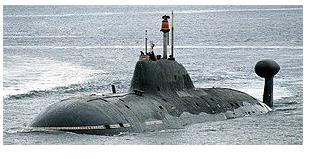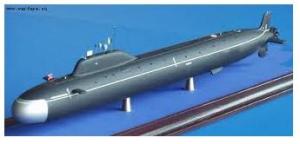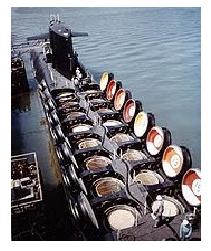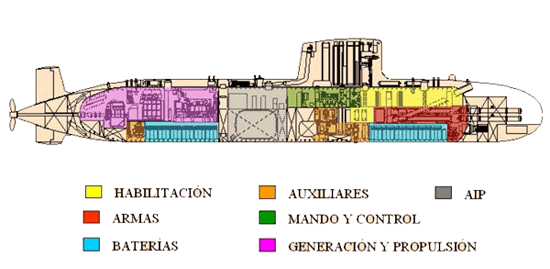Manticore
RETIRED MOD

- Joined
- Jan 18, 2009
- Messages
- 10,115
- Reaction score
- 114
- Country
- Location

Yankee II was a single-ship class, this was a Yankee I submarine (K-140) converted to carry 12 x SS-N-17 missiles, which was the Soviet Navy’s first solid-fuelled SLBM (submarine-launched ballistic missile). The existence of this individual prototype led

Left: Yankee Notch at sea
Yankee Sidecar (Project 667M/Andromeda-class) was yet another single-ship variant. Also known as Yankee SSGN, this was (in this case K-420) class, converted into an SSGN. It appeared in 1983, carrying 12 x SS-NX-24 nuclear-tipped cruise missiles
There were one or two more Yankee class that were prototypes or used as test beds.
5. Victor class
Strictly speaking Charlie class submarines came after Victor class (Charlie class in 1973, Victor class 1967), however, the first variant,Victor I, was operational before and the last variant, Victor II, and the Victor III were in production and operational (1995) long after the Charlie class had been decommissioned.The rationale of the Victor class design was for a vessel primarily to protect Soviet surface fleets and to attack American ballistic missile carrying submarines.

Left: Victor I
The Victor I class had the Soviet designation Project 671. It had two small, two-blade (not multi-blade) propellers fitted on the stern planes for slow-speed operation. Project 671 (Victor I) boats were retrofitted to handle the TEST- 68 wire-guided torpedo weapons
The initial type had a “crush depth” of 1,700 feet and capable of 32 kts this made it an ideal hunter-killer. Contemporaneous of the American Sturgeon class, Victor Is were significantly faster but had much higher noise levels, despite having a noise absorbing coating.
Victor IIs, of which only 7 were built, were a little longer (20 ft) and should have been heavier but counter-intuitively they are listed as having a displacement of 5, 800 tons (Victor Is 6, 085 tons). They entered service in 1972 and were equipped with the new “Kolos” non-acoustic detection system. However, production stopped when the Soviets, via their spy network, learnt that Victor IIs were being easily tracked by the West.
Victor II class were enlarged from the Victor I to provide additional weapons capabilities and improved fire-control system. The new generation of 65 cm (Type 65) heavy torpedoes were longer than earlier models, and required power assistance to handle them in the torpedo room. The Type 65 had a range of 50,000 yards and were designed to be used against large enemy vessels, e.g. aircraft cariers, that would not be expected to sink if hit by one normal sized (53 cm / 21”) torpedo.
All Victor Is and Victor IIs had been decommissioned by 1996. Some Victor IIIs had also been decommissioned by this date but several (about eight) are believed to be still active.
5.a. Victor III class
Victor IIIs entered service in 1979, were capable of 30 kts and displaced 7,000 tons. They are shown as a sub-set (5 a) due to the activities of John Walker and the Soviet espionage service (see below). The Victor III class, are immediately identifiable by their distinctive, almost iconic, rear sonar “pod.” Design improvements using ‘clusterguard anechoic’ coatings [2] helped to decrease radiated noise levels for the Victor IIIs. Anechoic tiles or coating not only reduce internal noises conducted into the sea which can then be heard from afar but blurs sonar detection apparatus (for other references to ‘anechoic’ tiles see alsohttp://rwhiston.wordpress.com/2011/10/17/11/ ). Twenty five were produced with the last one being completed in 1991.The Victor III was much quieter than the earlier versions – unusually so – and the reason soon became apparent. Among the US Naval fraternity the Victor III class, is sometimes called theWalker class since many of the improvements

Left: Victor III at sea
Victor IIIs were 325 ft long and displaced 7,000 – 7,250 tons but in all other respects were very similar to all other Marks. However, it was the Victor III class’s ‘pod’ that caused consternation for a long time among analysts in the fevered atmosphere that was the Cold War. The pod was later identified as a hydrodynamic housing for apassive sonar array that could be unreeled and towed to gather data and then reeled back in. NB. The system was subsequently incorporated into the Sierra class and Typhoon class of SSNs.6. Charlie class submarine
Soviet SSN designers seem to alternate between having missiles housed forward of the conning tower or astern and inevitably, e.g. the Victor class, there were again derivatives of this submarine class too.Charlie Is (Project 670) had two banks of four missile tubes angled upwards on each side of the bow and outside the pressurised hull. The tubes were covered by large outer doors and the design was to incorporate the P-120 Malakhit (NATO code Siren) medium range anti- ship missile (two of which carried nuclear warheads). Sirenallowed the submarine, to launch a missile up to a maximum depth of 150 feet. The illustration shown here displays the missile doors in the bow.

NB. Both the Ametist and Siren missiles could be fitted with nuclear warheads and are therefore designated SS-N. Stallion SS-N-16 missiles were also fitted.
The first Charlie I was launched in 1967 with another 10 followed over a period of five years. The displaced 4,900 tons submerged. In 1972 to 1979, six improved units called the Project 670M SKAT-M (NATO Charlie II class) were built.
The Charlie I class was de-commissioned from 1990 to 1992 andCharlie II were de-commissioned between 1991 and 1998 (Victor Iand II classes were de-commissioned in 1996 but Victor IIIs are still operational today).
Charlie IIs had a displacement of 5,100 tons when submerged, and were 340 ft long with a speed of 24 kts. They were first commissioned from 1973 to 1980 and all 6 were de-commissioned from 1991 onwards.
The Indian Navy leased K-43, a Charlie I (renamed as the ISN Chakra) from 1988 to 1992 which was manned by Indian sailors. After the 3 year lease ended, K-43 was returned to the Russian Pacific fleet.[5] This arrangement provided India with valuable experience of a nuclear powered submarine and guided missiles –ISN Chakra was armed with eight SS-N-7 known as Ametist (NATO code Starbright), anti-shipping missile.
Charlie class submarines are unique among Soviet combat nuclear submarines in having only a single reactor and a single propeller shaft – all other Soviet submarine classes feature two reactors and two propellers. American combat nuclear submarines tend to have only 1 reactor but their speed significantly exceeds the Charlieclass’s 24 kts. [6] The very last Charlie class was retired in 1998.Charlie class submarines were superseded by the Papa class, circa 1969.
7. Delta class submarine
What must surely be the most visually distinctive Soviet submarine ever produced is the Delta class – but it also had a worrisome arsenal.
Right: Delta class submarine
In the 1960s the Soviet Navy wanted a new submarine-launched nuclear missiles thatcould threaten targets in North America – preferably one without the launch platforms The submarine) needing to pass over the US’s deep sea sensors (SOSUS is a chain of underwater surveillance / listening posts across the northern Atlantic Ocean). [7]Delta class submarines were armed with the R-29 Vysota nuclear ballistic missile (NATO code ‘Sawfly’) which had a range of 4,780 miles (twice that of the preceding missile type). The need for constant patrolling off the American coast (see Yankee class) became redundant – Delta’s could sit under theArctic or far out in the Pacific and still reach their targets.
The class evolved over time into the Delta II which was a “stretched” Delta I that could carry 16 rather than 12 ICBN missiles – all with multiple warheads.
The family of Delta class (from Delta I to Delta IV) is primarily a nuclear deterrent and it has evolved with time to meet changing requirements.
- Delta I – submerged: 10,000 tons, length 456 ft, speed 25 kts. First introduced in 1973 all 18 built have been retired.
- Delta II – submerged: 10,500 tons, length 508 ft, speed 24 kts. All 4 built have been retired.
- Delta III – submerged 18,200 tons, length 544 ft, speed 24 kts. Of the 14 built commissioned between 1976 and 1982, five are still active.
- Delta IV – little data is available. Of the 7 begun from 1984 to 1990, all are still active.
The much larger Typhoon class submarines had been earmarked to replace Delta class. However, the high running costs Typhoons and the enforced retirement of the Typhoons′ R-39 ICBM missiles under the START I Treaty, meant that some Delta III’s were reactivated in the early 2000s as replacements. By 2004 all R-39missiles had been withdrawn and destroyed.
Each succeeding Delta class had better noise reduction. The Delta III, at 544 ft and 18,200 tons, was a leap up in firepower. It was the first Soviet boat that could launch any number of missiles in a single salvo, also the first submarine capable of carrying ballistic missiles with multiple independently targetable reentry vehicles(MIRV). The Delta III was also equipped with a new ‘battle management system’ (the Almaz-BDR) for the fire control of torpedoes in deep-water, a new sonar system, and also had a new ‘inertial navigation system.’
The submarine design of Delta IVs is similar to that of Delta II andDelta III. It is probably bigger again than Delta III but the operational diving depth of the submarine is said to be 320 metres (approx 1.050 feet) and unlike all other Delta class boats it surface speed is as fast as its submerged speed, i.e. 24 knots.
8. Papa class submarine
Soviet submarine K-162 was at 44 kts the world’s fastest submarine – and remains faster than many others today. Her estimated test depth was 1,312 ft. and endurance 70 days. Papa class submarine were designed as nuclear-powered attack submarine and the first to be constructed with a titanium hull. She would prove to be a single-boatsubmarine type which the Soviet named Project 661. The boat is best known in the West by its NATO reporting name Papa class. K-162 was renamed K-222 in 1978.

She is regarded as a predecessor to the Alfa and Sierra classes, and may have tested technologies which were later used in those classes.
As an extremely fast attack submarine K-222 was armed with 10 x SS-N-7 Starbright (П-70 ’Amethyst’) missiles in individual tubes forward of the sail, between the inner and outer hulls, which were both of titanium alloy. Similar in design to the Charlie class submarine, K-222 was designed to intercept and attack aircraft carrier groups. In common with the Charlie class and the laterOscar class submarines, her cruise missiles could only be reloaded in port, making her one of the Soviet Navy’s “one shot” boats.
The single Papa class submarine displaced 7,100 tons when submerged, was 350 ft 9” long and had two water-water reactors, designed to be as compact as possible. Unusually, there were no diesel generators – the ‘emergency power’ source was the boat’s powerful batteries.
Her sensors and processing systems included the MGK-300 “Rubin” sonar system, the “Ladoga-P-661” torpedo fire control system and the “Sygma-661” navigation system. Her radar systems were RLK-101 and MTP-10, a Nichrom “Friend or Foe” detection system and there is mention of a “radio intelligence station”.
Offensively she was armed with ten SS-N-7 nuclear tipped cruise missiles in individual tubes, and carried 12 torpedoes to be fired through four 533-mm (21”) torpedo-tubes.
9. Alfa class submarines
Alfa class submarines replaced the Victor class and at 41 kts were the fastest class of military submarines built. They were the result of the Soviet Navy’s Project 705 where a uniquely powerful lead cooled fast reactor was the power source, this greatly reducing the size of the reactor compared to conventional designs.The trade-off was that the reactor had a shorter lifetime and had to be kept warm when not being used. As a result, the Alfas were used as interceptors,

Right: Alfa class submarine
Of all Soviet designs the Alfa is perhaps the most brooding, the most menacing looking. Alfa class boats displaced 3,200 tons submerged and were 265 ft long. Visually, Alfa class and Victorclass can be distinguished in the area where the latter has amore blended-in junction between conning tower and hull. All Victorclass craft have a pronounced 90 degree junction.The hulls were made of titanium and at a time when acoustic detection was being complemented by MAD (magnetic anomaly detector) in both sea and air borne mode, a very low magnetic reading was invaluable.
Such was the insanity of the era thatbarely 3 years after being commisioned, in 1971, the first of the Alfa class submarine were being decommisioned. Seven were built (between 1969 and 1981) and there appears to be no subsequent variant or derivation for this class. Most Alfa class were decommissioned in 1990 with only 1 being scraped later in 1996. According to U.S. Naval Intelligence, the tactical speed was similar to Sturgeon class submarines, i.e. 26 kts submerged.
In terms of straight line-speed the Alfa was therefore a slippery customer. This was only bolstered by its extremely good manoeuvrability which not only exceeded all other submarines in service at the time but also most of the torpedoes that were available. Acceleration to top speed took one minute and reversing 180 degrees at full speed took just 40 seconds. The ability to thus successfully evade torpedoes launched by other submarines required the introduction of faster torpedoes such as the AmericanADCAP and the British Spearfish.
According to U.S. Naval Intelligence, Alfa class submarines were designed for burst of speed up to about tests 43 – 45 kts (approx 52 mph) and was capable of a sustained speeds of 41 – 42 kts (still faster than any Western boat.









































